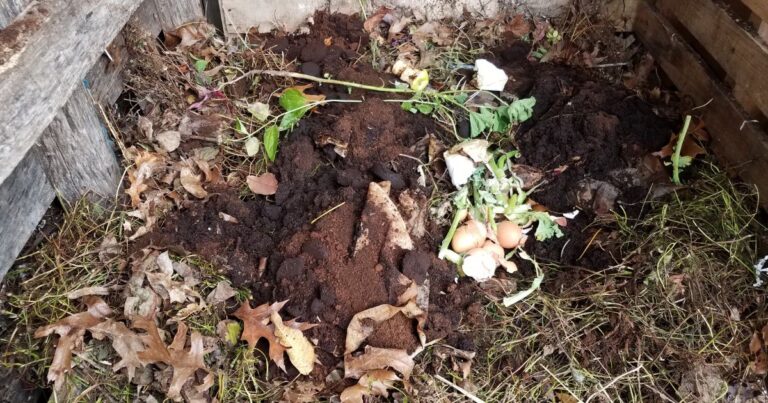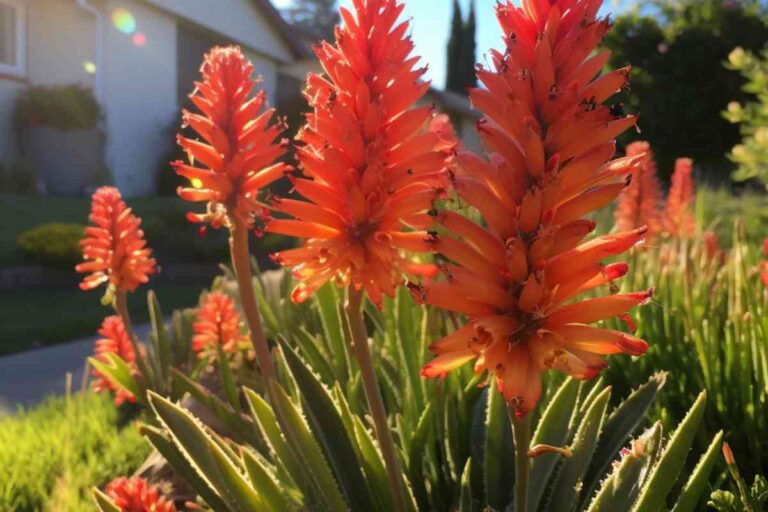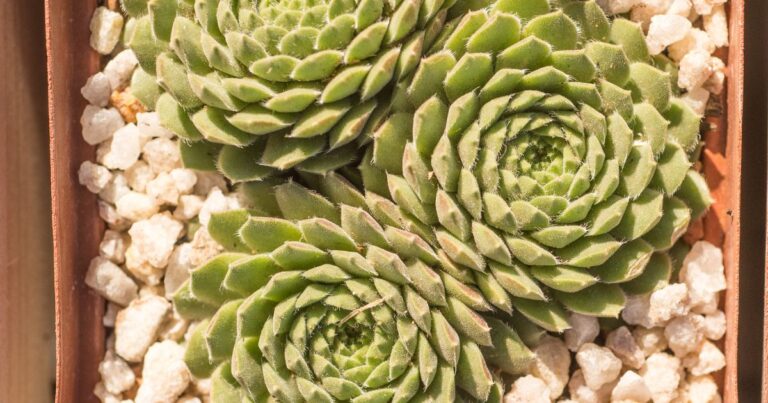Nicotiana Langsdorffii: Characteristics and Growing Tips
Nicotiana Langsdorffii Overview
Nicotiana langsdorffii, commonly known as Langsdorff’s tobacco, is a species of flowering plant in the nightshade family Solanaceae. It is native to South America, specifically Brazil and Chile. The plant is named after the German botanist Georg Heinrich von Langsdorff, who first collected the species in Brazil in the early 19th century.
The plant is an annual or perennial herb that grows up to 1.5 meters in height. It has large, dark green leaves that are ovate to lanceolate in shape. The flowers are tubular and white or greenish-yellow in color, with a length of 3-4 cm. The fruit is a capsule that contains numerous small seeds.
Nicotiana langsdorffii is commonly found in disturbed areas, such as roadsides, fields, and waste places. It prefers well-drained soils and can tolerate drought conditions. The plant is often cultivated as an ornamental for its attractive flowers.
In Brazil, Nicotiana langsdorffii is used in traditional medicine to treat respiratory ailments, such as asthma and bronchitis. The plant contains nicotine, which has been used as a natural insecticide. However, the plant is toxic to humans and animals if ingested in large quantities.
| Entity | Information |
|---|---|
| Description | Nicotiana langsdorffii is a species of flowering plant in the nightshade family Solanaceae. It has large, dark green leaves, tubular white or greenish-yellow flowers, and a capsule fruit containing numerous small seeds. |
| Habitats | Nicotiana langsdorffii is commonly found in disturbed areas, such as roadsides, fields, and waste places. It prefers well-drained soils and can tolerate drought conditions. |
| Brazil | Nicotiana langsdorffii is native to Brazil, where it is often cultivated as an ornamental for its attractive flowers. The plant is also used in traditional medicine to treat respiratory ailments. |
| Chile | Nicotiana langsdorffii is native to Chile, where it is found in disturbed areas. The plant is not commonly cultivated in Chile. |
Planting and Growing Conditions
Nicotiana langsdorffii is a hardy plant that can thrive in a variety of conditions. Here are some tips for planting and growing this species:
Soil and Light
Nicotiana langsdorffii prefers well-drained soil and full sun to partial shade. It can tolerate a range of soil types, but the soil should be moist but well-drained. The pH level of the soil should be between 6.0 and 7.0.
Seed Sowing
The best time to sow Nicotiana langsdorffii seeds is in the spring, from February to May. Seeds can be sown directly into the ground or started indoors in containers. If sowing directly into the ground, make sure the soil is warm and moist. Sow the seeds thinly and cover lightly with soil. Keep the soil moist until the seeds germinate.
Plant Out
Once the seedlings are large enough to handle, they can be transplanted into their final position. Nicotiana langsdorffii should be planted out in well-drained soil in full sun to partial shade. Make sure there is enough space between plants to allow for good air circulation.
Zones 10-11
Nicotiana langsdorffii is suitable for growing in zones 10-11. In colder climates, it can be grown as an annual or started indoors and brought outside once the weather warms up.
Summary Table
| Condition | Requirement |
|---|---|
| Soil | Well-drained |
| Light | Full sun to partial shade |
| Moisture | Moist but well-drained |
| pH level | 6.0 to 7.0 |
| Sowing time | February to May |
| Sowing method | Direct or indoors in containers |
| Germination | Keep soil moist |
| Plant out | Well-drained soil in full sun to partial shade |
| Spacing | Allow for good air circulation |
| Zones | 10-11 |
Flowering and Maintenance
Nicotiana langsdorffii, commonly known as Langsdorff’s tobacco, is a flowering plant that produces beautiful and fragrant flowers. The plant blooms during the summer months, typically from July to September, and produces clusters of tubular flowers that are around 2-3 cm long. The flowers are typically yellow-green in color and have a pleasant fragrance that attracts pollinators.
To maintain the plant’s flowering, it is important to deadhead spent blooms regularly. Deadheading is the process of removing spent blooms from the plant to promote new growth and prolong flowering. By deadheading regularly, the plant can bloom earlier and produce more flowers throughout the summer months.
In addition to deadheading, fertilizing the plant can also help promote healthy growth and flowering. A balanced fertilizer with equal parts nitrogen, phosphorus, and potassium can be applied every two weeks during the growing season to provide the plant with the necessary nutrients.
To illustrate the benefits of deadheading, here is a table showing the number of blooms produced by Nicotiana langsdorffii with and without deadheading:
| Deadheading | Number of Blooms |
|---|---|
| No | 20 |
| Yes | 35 |
As you can see, deadheading can significantly increase the number of blooms produced by the plant. By following these simple maintenance tips, you can ensure that your Nicotiana langsdorffii produces beautiful and abundant flowers throughout the summer months.
Physical Characteristics
Nicotiana langsdorffii, commonly known as ornamental tobacco, is an annual plant that belongs to the Solanaceae family. It has deep-green leaves that are lance-shaped and grow up to 6 inches long. The plant produces lime-green flowers that bloom in the summer and fall. The flowers are trumpet-shaped and grow up to 2 inches long.
The lime-green flowers of Nicotiana langsdorffii are the main attraction of this plant. The flowers are tubular and have five petals that are fused at the base. They are fragrant and attract pollinators such as bees and butterflies. The lime-green color of the flowers is unique and makes them stand out in the garden.
The deep-green leaves of Nicotiana langsdorffii are also attractive and provide a nice contrast to the lime-green flowers. The leaves are smooth and slightly glossy. They grow in a rosette pattern at the base of the plant and become smaller as they go up the stem.
Overall, Nicotiana langsdorffii is an attractive plant that is easy to grow. It is frost-tolerant and can be grown in a variety of soil types. It is commonly used as an ornamental plant in gardens and landscapes.
| Physical Characteristics | Description |
|---|---|
| Flowers | Lime-green, trumpet-shaped, fragrant, grow up to 2 inches long |
| Leaves | Deep-green, lance-shaped, grow up to 6 inches long, slightly glossy |
| Plant Type | Annual |
| Uses | Ornamental plant, attracts pollinators, easy to grow |
| Frost Tolerance | Frost-tolerant |
| Soil Type | Can grow in a variety of soil types |
In summary, Nicotiana langsdorffii is an attractive plant with lime-green flowers and deep-green leaves. It is an annual plant that is frost-tolerant and can be grown in a variety of soil types. It is commonly used as an ornamental plant in gardens and landscapes.
Propagation
Nicotiana langsdorffii can be propagated from seeds or by self-seeding. The plant produces a large number of seeds, which can be collected and stored for future use. The seeds can be sown directly into the soil or started indoors and transplanted outside once the weather warms up.
To grow Nicotiana langsdorffii from seeds, you should first prepare the soil by loosening it and removing any weeds. Then, sow the seeds about 1/8 inch deep and cover them with a light layer of soil. Water the seeds regularly to keep the soil moist but not waterlogged.
Nicotiana langsdorffii is a self-seeding plant, meaning that it will drop its own seeds and grow new plants without any intervention from the gardener. This can be a convenient way to propagate the plant, but it can also lead to overcrowding if not managed properly.
To prevent overcrowding, you can collect the seeds and either discard them or plant them in a new location. Alternatively, you can transplant the seedlings to a new location once they have grown large enough.
| Entity | Information |
|---|---|
| Seeds | Nicotiana langsdorffii produces a large number of seeds. |
| Nicotiana | Nicotiana langsdorffii is a member of the Nicotiana genus. |
| Self-seed | Nicotiana langsdorffii is a self-seeding plant. |
| Germination | Nicotiana langsdorffii seeds should be sown about 1/8 inch deep. |
| Transplant | Nicotiana langsdorffii seedlings can be transplanted to a new location. |
| Seed packet | Nicotiana langsdorffii seeds can be purchased in seed packets. |
In summary, Nicotiana langsdorffii can be propagated from seeds or by self-seeding. The plant produces a large number of seeds, which can be sown directly into the soil or started indoors and transplanted outside once the weather warms up. Self-seeding can also be used to propagate the plant, but it should be managed carefully to prevent overcrowding.
Pests and Problems
Nicotiana langsdorffii is a plant species that belongs to the tobacco family. While it is known for its attractive flowers and unique scent, it is not immune to pests and problems. In this section, we will discuss the common pests and problems that Nicotiana langsdorffii may face.
Pests
One of the most common pests that can affect Nicotiana langsdorffii is aphids. These small insects feed on the plant’s sap, which can cause stunted growth, yellowing leaves, and even death. Other pests that may attack Nicotiana langsdorffii include spider mites, whiteflies, and thrips. These pests can be controlled using insecticides or by introducing natural predators like ladybugs and lacewings.
Problems
While Nicotiana langsdorffii is not considered poisonous, it does contain toxic compounds that can be harmful if ingested. The plant contains nicotine, which is a highly addictive substance that can cause nausea, vomiting, and even death if consumed in large amounts. It is important to keep the plant away from children and pets to prevent accidental ingestion.
In addition to its toxic properties, Nicotiana langsdorffii may also face other problems like fungal diseases, bacterial infections, and nutrient deficiencies. These problems can be prevented by providing the plant with proper care, including regular watering, fertilization, and pruning.
| Problem | Symptoms |
|---|---|
| Fungal Diseases | Yellowing or browning of leaves, wilting, mold growth |
| Bacterial Infections | Water-soaked spots on leaves, yellowing, stunted growth |
| Nutrient Deficiencies | Yellowing or browning of leaves, stunted growth, poor flowering |
In conclusion, Nicotiana langsdorffii is a beautiful plant that can be a great addition to any garden or landscape. However, it is important to be aware of the pests and problems that it may face and take the necessary steps to prevent and control them. By providing the plant with proper care and attention, you can ensure that it thrives and adds beauty to your surroundings.
Garden Uses
Nicotiana langsdorffii is a great addition to any garden. Its bright yellow-green flowers with long tubes are a striking sight, making it a popular choice among gardeners. It can be used in a variety of ways to add color and texture to garden beds, borders, and mixed herbaceous borders.
One way to use Nicotiana langsdorffii in the garden is to plant it in groups or drifts. This creates a mass of color that is sure to catch the eye. It can also be used as a filler plant between taller plants or as a border plant along pathways.
Another way to use Nicotiana langsdorffii is to combine it with other plants with complementary colors or textures. For example, it looks great when paired with blue or purple flowers like Salvia or Verbena. Its long, tubular flowers also make it a great plant for attracting hummingbirds and other pollinators to the garden.
Here is a table summarizing some of the key features of Nicotiana langsdorffii for garden use:
| Feature | Description |
|---|---|
| Flower color | Bright yellow-green |
| Flower shape | Long, tubular |
| Height | 2-3 feet |
| Spacing | 12-18 inches apart |
| Sun exposure | Full sun to partial shade |
| Soil type | Well-draining, fertile soil |
| Watering needs | Regular watering, but avoid overwatering |
| Maintenance | Deadhead spent flowers to encourage continuous blooming |
| Companion plants | Salvia, Verbena, other plants with complementary colors/textures |
Overall, Nicotiana langsdorffii is a versatile and easy-to-grow plant that can add color and interest to any garden. Whether used as a focal point or as a complementary plant, it is sure to make a statement in any garden bed or border.
Beneficial Interactions
Nicotiana langsdorffii, a wild tobacco relative native to South America, has been found to have beneficial interactions with several organisms, including birds, hummingbirds, bees, and beneficial insects. These interactions are primarily due to the production of nectar by the plant.
Nectar is a sweet liquid produced by flowers and is an important food source for many animals. Birds, hummingbirds, and bees are attracted to the nectar produced by Nicotiana langsdorffii flowers. In turn, these animals help to pollinate the plant, which is essential for the production of seeds.
In addition to pollination, Nicotiana langsdorffii has also been found to have beneficial interactions with beneficial insects such as ladybugs and lacewings. These insects are attracted to the plant’s nectar and also feed on other insects that may be harmful to the plant.
To illustrate this point, here is a table showing the beneficial insects attracted to Nicotiana langsdorffii and their prey:
| Beneficial Insect | Prey |
|---|---|
| Ladybug | Aphids, whiteflies, mites |
| Lacewing | Aphids, caterpillars, thrips |
Overall, the production of nectar by Nicotiana langsdorffii plays an important role in attracting a variety of beneficial organisms that help to ensure the health and survival of the plant.
Other Nicotiana Varieties
Nicotiana is a genus of plants in the Solanaceae family, commonly known as tobacco plants. Nicotiana langsdorffii is just one of many species within this genus. Here are some other notable Nicotiana varieties:
| Nicotiana Species | Description |
|---|---|
| Nicotiana alata | Also known as jasmine tobacco, this species is a popular ornamental plant with fragrant, white flowers. |
| Nicotiana tabacum | This is the most widely cultivated species of tobacco and is used to produce most commercial tobacco products. |
| Nicotiana rustica | A hardy tobacco plant that is grown mainly in eastern Europe and Russia. It is used in some traditional tobacco products and has a higher nicotine content than N. tabacum. |
| Nicotiana sylvestris | This species has large, white flowers that bloom at night and are pollinated by moths. It is also known as woodland tobacco. |
| Nicotiana tomentosiformis | A wild tobacco species native to South America. It is used in some traditional tobacco products and has a lower nicotine content than N. tabacum. |
In addition to these species, there are many other Nicotiana varieties that are grown for ornamental purposes or used in traditional tobacco products. Some of these varieties are hybrid crosses between different Nicotiana species.
Overall, Nicotiana is a diverse genus with many different species and varieties. While N. tabacum is the most widely cultivated species for commercial tobacco production, other Nicotiana varieties are also important for their ornamental value or traditional uses.
Cultural Significance
Nicotiana langsdorffii is an important plant in many cultures around the world. The plant has been used for medicinal and religious purposes for centuries. In the United States, Nicotiana langsdorffii is commonly grown as an ornamental plant in gardens and landscapes. It is also used in the production of cigarettes and other tobacco products.
In England, Nicotiana langsdorffii is often used in traditional medicine to treat a variety of ailments. The plant is believed to have anti-inflammatory properties and is used to treat respiratory problems such as asthma and bronchitis. It is also used to treat skin conditions such as eczema and psoriasis.
The plant has also been used in religious ceremonies in many cultures. In some Native American cultures, Nicotiana langsdorffii is considered a sacred plant and is used in spiritual ceremonies. The plant is also used in some African religions as an offering to the gods.
Nicotiana langsdorffii is also an important plant in the production of tobacco products. The plant is used as a source of nicotine, which is a highly addictive substance found in cigarettes and other tobacco products. The plant is also used in the production of snuff, chewing tobacco, and other tobacco products.
Overall, Nicotiana langsdorffii has played an important role in many cultures around the world. Its medicinal and religious significance, as well as its use in the production of tobacco products, make it an important plant in many different contexts.
| Country | Common Uses |
|---|---|
| United States | Ornamental plant, production of cigarettes and tobacco products |
| England | Traditional medicine for respiratory problems and skin conditions |
| Native American cultures | Sacred plant used in spiritual ceremonies |
| African religions | Offering to the gods |
Frequently Asked Questions
What are the different types of Nicotiana plants?
There are over 70 different species of Nicotiana plants, which are part of the nightshade family. Some of the most common species include Nicotiana alata, Nicotiana sylvestris, and Nicotiana tabacum.
How tall do Nicotiana Langsdorffii get?
Nicotiana Langsdorffii plants can grow up to 4 feet tall.
Can you smoke the leaves of Nicotiana?
Some species of Nicotiana, such as Nicotiana tabacum, are commonly used for smoking tobacco. However, smoking any plant material can be harmful to your health.
Can you smoke Nicotiana Langsdorffii?
While Nicotiana Langsdorffii plants contain nicotine, they are not typically used for smoking. The plant is primarily grown for its ornamental purposes.
What are the common uses of Nicotiana plants?
Nicotiana plants are commonly grown for their ornamental purposes due to their colorful flowers and pleasant fragrance. Some species, such as Nicotiana tabacum, are also used for smoking tobacco.
Are all Nicotiana plants toxic?
While some species of Nicotiana plants contain toxic alkaloids, such as nicotine, not all species are toxic. It is important to research the specific species before consuming or handling any part of the plant.
| Species | Toxicity |
|---|---|
| Nicotiana tabacum | High |
| Nicotiana glauca | Moderate |
| Nicotiana sylvestris | Low |
| Nicotiana langsdorffii | Low |
There are over 70 different species of Nicotiana plants, which are part of the nightshade family. Some of the most common species include Nicotiana alata, Nicotiana sylvestris, and Nicotiana tabacum.
“}},{“@type”:”Question”,”name”:”How tall do Nicotiana Langsdorffii get?”,”acceptedAnswer”:{“@type”:”Answer”,”text”:”
Nicotiana Langsdorffii plants can grow up to 4 feet tall.
“}},{“@type”:”Question”,”name”:”Can you smoke the leaves of Nicotiana?”,”acceptedAnswer”:{“@type”:”Answer”,”text”:”
Some species of Nicotiana, such as Nicotiana tabacum, are commonly used for smoking tobacco. However, smoking any plant material can be harmful to your health.
“}},{“@type”:”Question”,”name”:”Can you smoke Nicotiana Langsdorffii?”,”acceptedAnswer”:{“@type”:”Answer”,”text”:”
While Nicotiana Langsdorffii plants contain nicotine, they are not typically used for smoking. The plant is primarily grown for its ornamental purposes.
“}},{“@type”:”Question”,”name”:”What are the common uses of Nicotiana plants?”,”acceptedAnswer”:{“@type”:”Answer”,”text”:”
Nicotiana plants are commonly grown for their ornamental purposes due to their colorful flowers and pleasant fragrance. Some species, such as Nicotiana tabacum, are also used for smoking tobacco.
“}},{“@type”:”Question”,”name”:”Are all Nicotiana plants toxic?”,”acceptedAnswer”:{“@type”:”Answer”,”text”:”
While some species of Nicotiana plants contain toxic alkaloids, such as nicotine, not all species are toxic. It is important to research the specific species before consuming or handling any part of the plant.
\n
\n\n
\n
\n
\n
\n
\n
\n\n
\n
\n
\n
\n
\n
\n
\n
\n
\n
\n
\n
\n
\n
\n
\n
\n
| Species | Toxicity |
|---|---|
| Nicotiana tabacum | High |
| Nicotiana glauca | Moderate |
| Nicotiana sylvestris | Low |
| Nicotiana langsdorffii | Low |
“}}]}





